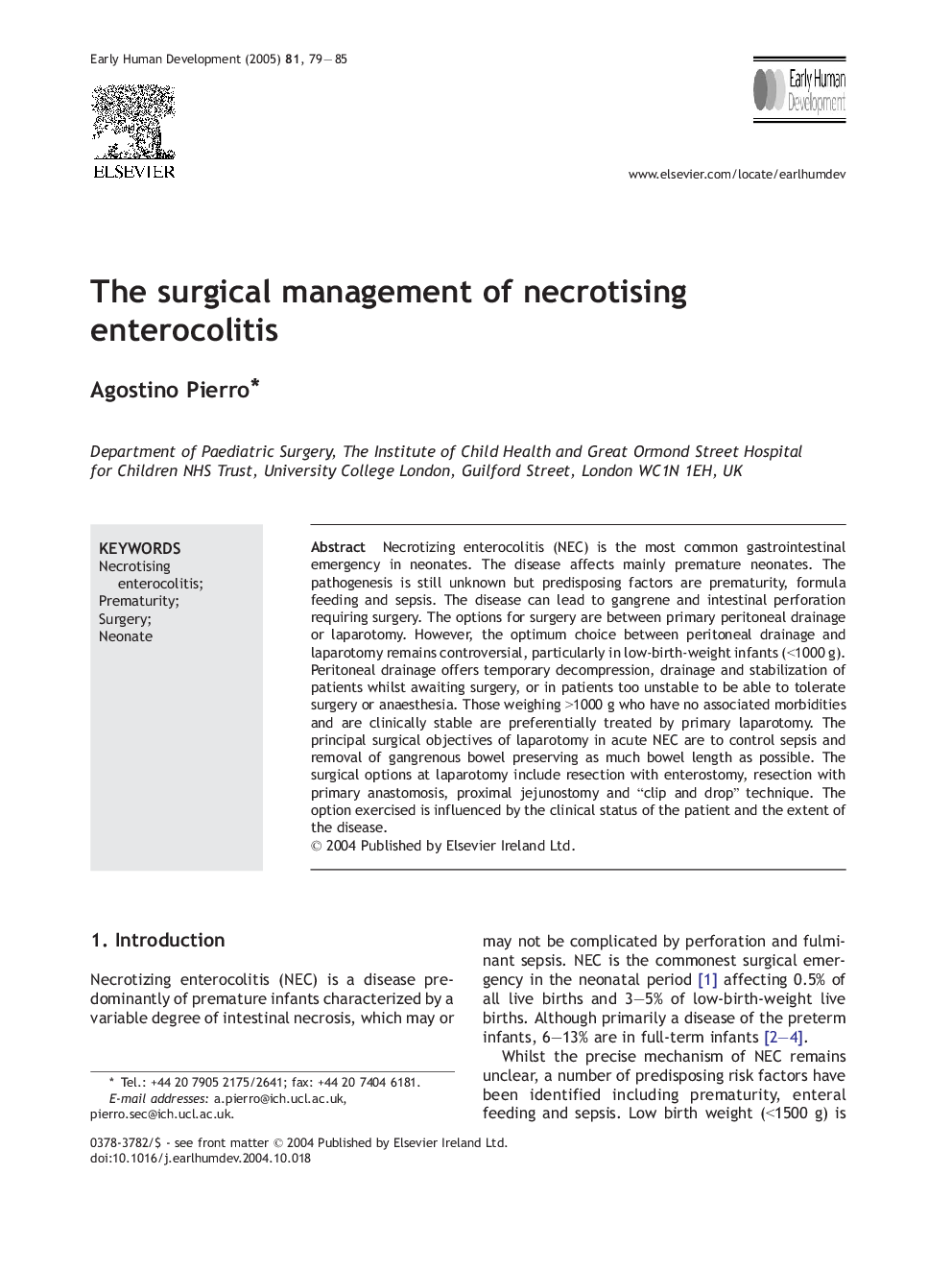| کد مقاله | کد نشریه | سال انتشار | مقاله انگلیسی | نسخه تمام متن |
|---|---|---|---|---|
| 9318749 | 1252205 | 2005 | 7 صفحه PDF | دانلود رایگان |
عنوان انگلیسی مقاله ISI
The surgical management of necrotising enterocolitis
دانلود مقاله + سفارش ترجمه
دانلود مقاله ISI انگلیسی
رایگان برای ایرانیان
کلمات کلیدی
موضوعات مرتبط
علوم پزشکی و سلامت
پزشکی و دندانپزشکی
زنان، زایمان و بهداشت زنان
پیش نمایش صفحه اول مقاله

چکیده انگلیسی
Necrotizing enterocolitis (NEC) is the most common gastrointestinal emergency in neonates. The disease affects mainly premature neonates. The pathogenesis is still unknown but predisposing factors are prematurity, formula feeding and sepsis. The disease can lead to gangrene and intestinal perforation requiring surgery. The options for surgery are between primary peritoneal drainage or laparotomy. However, the optimum choice between peritoneal drainage and laparotomy remains controversial, particularly in low-birth-weight infants (<1000 g). Peritoneal drainage offers temporary decompression, drainage and stabilization of patients whilst awaiting surgery, or in patients too unstable to be able to tolerate surgery or anaesthesia. Those weighing >1000 g who have no associated morbidities and are clinically stable are preferentially treated by primary laparotomy. The principal surgical objectives of laparotomy in acute NEC are to control sepsis and removal of gangrenous bowel preserving as much bowel length as possible. The surgical options at laparotomy include resection with enterostomy, resection with primary anastomosis, proximal jejunostomy and “clip and drop” technique. The option exercised is influenced by the clinical status of the patient and the extent of the disease.
ناشر
Database: Elsevier - ScienceDirect (ساینس دایرکت)
Journal: Early Human Development - Volume 81, Issue 1, January 2005, Pages 79-85
Journal: Early Human Development - Volume 81, Issue 1, January 2005, Pages 79-85
نویسندگان
Agostino Pierro,